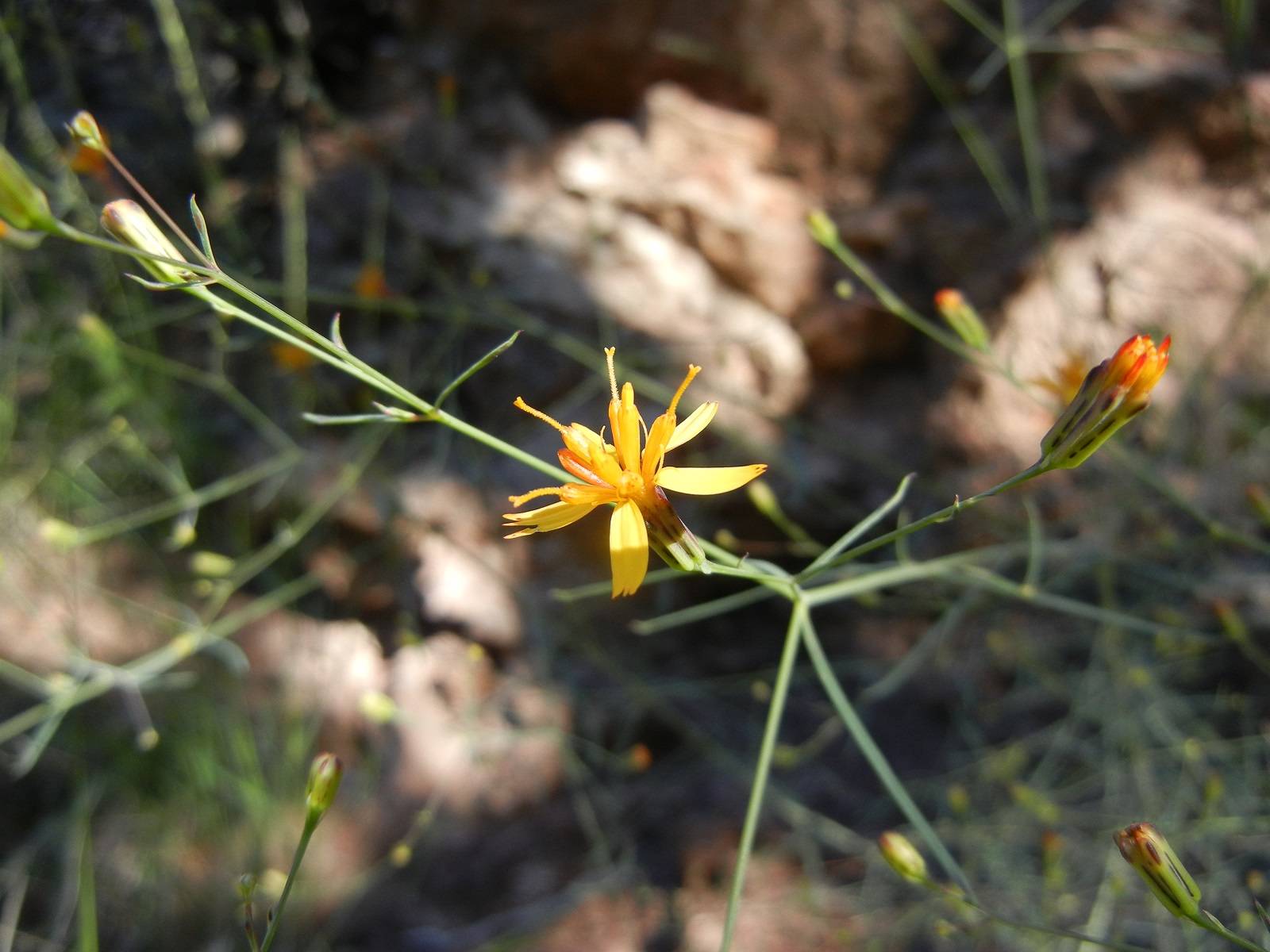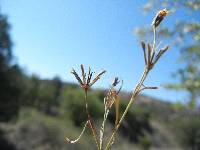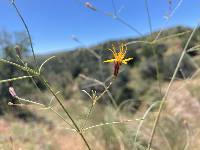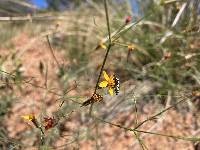Pectis imberbis
|
|
|
|
Family: Asteraceae
Beardless Chinchweed, more...beardless cinchweed (es: yerba del venado)
|
Perennials, 30-120 cm (caudices woody, 2-8+ mm diam.); herbage unscented. Stems erect, glabrous. Leaves narrowly linear, 10-50 × 1-2 mm (sometimes smaller, bractlike distally), margins with 0-1 pairs of setae, faces glabrous (abaxial dotted near each margin with a row of elliptic oil-glands ca. 0.3 mm). Heads borne singly or in open, cymiform arrays. Peduncles 10-80 mm. Involucres cylindric. Phyllaries distinct, linear-oblong, 5-9.5 × 1-1.5 mm (each dotted with 1-2 swollen, subapical oil-glands and a row of 2-3 linear, submarginal oil-glands on each side of midrib). Ray florets 5; corollas 6-11 mm (laminae often dotted near margins with inconspicuous oil-glands). Disc florets 4-7; corollas 3.7-6 mm (lobes 5, equal, each with 1 subterminal oil-gland). Cypselae 3.5-5 mm, puberulent (hair tips blunt); pappi of 1-3 stout awns 1-2 mm or coroniform. 2n = 24. Flowering Aug-Oct. Pine-oak-juniper woodlands, grasslands, arid shrublands; 1000-1700 m; Ariz.; Mexico (Chihuahua, Sonora). Pectis imberbis occurs in relatively small, widely separated populations. Overgrazing may be a factor in the scarcity of these plants. They are generally more than 25 cm before they begin to flower and may be unable to reproduce under grazing pressure.
FNA 2006, Kearney and Peebles 1969 Duration: Perennial Nativity: Native Lifeform: Forb/Herb General: Herbaceous perennials, to 100 cm tall, erect, stiff, herbage glabrous, unscented, arising from a woody rootstock. Leaves: Opposite, narrowly linear, glandular-punctate, faces glabrous, dotted underneath near each margin with a row of elliptic oil-glands, margins entire, with 0-1 pairs of stiff bristles near the base, reducing apically, sometimes appearing as bractlets beneath the inflorescence. Flowers: Heads small, radiate, rays 5, yellow, sometimes with purple streaks, the corollas 6-11 mm, disk flowers yellow, 4-7, involucres cylindric, phyllaries in a single series, sometimes purple-tinged, distinct, linear-oblong, 5-9.5 mm long, 1.5 mm wide, each dotted with 1-2 swollen, subapical oil-glands and a row of 2-3 linear, submarginal oil-glands on each side of midrib, inflorescences borne solitary or in small cymes. Fruits: Achenes puberulent, 3.5-5 mm long. Pappus of 1-3 erect subulate awns amid short scales. Ecology: Found in pine-oak-juniper woodlands, grasslands, arid shrublands, from 4,000-5,500 ft (1219-1676 m); flowering August-October. Distribution: Arizona; Mexico. Ethnobotany: Unknown Etymology: Pectis is from the Greek pecteo, to comb, while imberbis means without a beard. Synonyms: None Editor: LCrumbacher 2011 |




